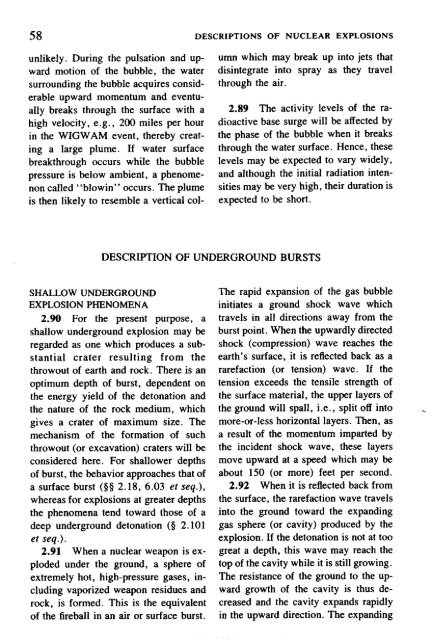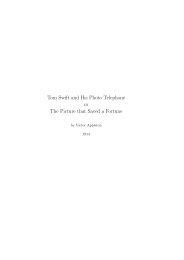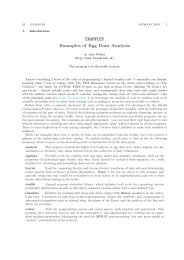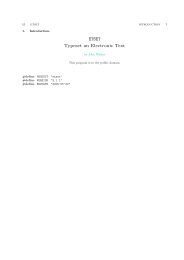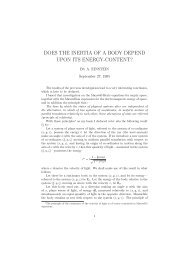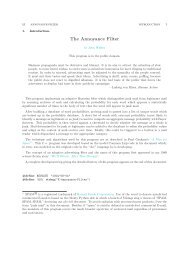Create successful ePaper yourself
Turn your PDF publications into a flip-book with our unique Google optimized e-Paper software.
58 DESCRIPTIONS OF NUCLEAR EXPLOSIONSunlikely. During the pulsation and up- umn which may break up into jets thatward motion of the bubble, the water disintegrate into spray as they travelsurrounding the bubble acquires con sid- through the air.erable upward momentum and eventuallybreaks through the surface with a 2.89 The activity levels of the rahighvelocity, e.g., 200 miles per hour dioactive base surge will be affected byin the WIGWAM event, thereby creat- the phase of the bubble when it breaksing a large plume. If water surface through the water surface. Hence, thesebreakthrough occurs while the bubble levels may be expected to vary widely,pressure is below ambient, a phenome- and although the initial radiation intennoncalled "blowin" occurs. The plume sities may be very high, their duration isis then likely to resemble a vertical col- expected to be short.DESCRIPTION OF UNDERGROUND BURSTSSHALLOW UNDERGROUNDThe rapid expansion of the gas bubbleEXPLOSION PHENOMENAinitiates a ground shock wave which2.90 For the present purpose, a travels in all directions away from theshallow underground explosion may be burst point. When the upwardly directedregarded as one which produces a sub- shock (compression) wave reaches thestantial crater resulting from the earth's surface, it is reflected back as athrowout of earth and rock. There is an rarefaction (or tension) wave. If theoptimum depth of burst, dependent on tension exceeds the tensile strength ofthe energy yield of the detonation and the surface material, the upper layers ofthe nature of the rock medium, which the ground will spall, i.e., split off into ~gives a crater of maximum size. The more-or-less horizontal layers. Then, asmechanism of the formation of such a result of the momentum imparted bythrowout (or excavation) craters will be the incident shock wave, these layersconsidered here. For shallower depths move upward at a speed which may beof burst, the behavior approaches that of about 150 (or more) feet per second.a surface burst (§§ 2.18, 6.03 et seq.), 2.92 When it is reflected back fromwhereas for explosions at greater depths the surface, the rarefaction wave travelsthe phenomena tend toward those of a into the ground toward the expandingdeep underground detonation (§ 2.101 gas sphere (or cavity) produced by theet seq.).explosion. If the detonation is not at too2.91 When a nuclear weapon is ex- great a depth, this wave may reach theploded under the ground, a sphere of top of the cavity while it is still growing.extremely hot, high-pressure gases, in- The resistance of the ground to the upcludingvaporized weapon residues and ward growth of the cavity is thus derock,is formed. This is the equivalent creased and the cavity expands rapidlyof the fireball in an air or surface burst. in the upward direction. The expanding


